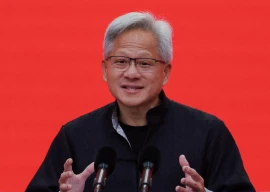
But no, this is no longer how news is collected and understood. We want quick fix solutions, and in this desperate competitiveness, want answers even before the votes have been counted. Any serious journalist will point out that all that is possible, before the counting, is a sense of the trends, the voting patterns of certain sections like the youth, who seem to have taken enthusiastic part in polling in Delhi, and a general idea of the issues that worked, and those that did not. As a result, the predictions in closely fought contests such as Delhi and Chhattisgarh, the margins of error remain real, but instead of warning of this and discussing the reasons for the close contest, the media takes the easy way out by presenting pre-poll results as a virtual fait accompli.
It is important, thus, to point out a few trends that seem to be emerging from the elections at this stage. One, while BJP leader Narendra Modi is the talisman of his party, it is still not certain whether he can claim this space insofar as the people of India are concerned. Despite his whirlwind, highly publicised campaigns across the states, he has not been able to generate a wave where all else is vanquished, as clearly the BJP was hoping for. The contests remain real and fairly tough in states like Delhi and Chhattisgarh, with the Congress registering a mark even in Madhya Pradesh (MP) where the BJP seems to be ahead. It is also clear that the state leadership counts for a great deal, and if the voters stay with the BJP in MP, it will be largely due to the work done by their Chief Minister Shiv Raj Chouhan there. In Rajasthan, the vote seems to be favouring BJP’s Vasundhara Raje who, by all accounts, has been camping there, and working hard to swing the tide against incumbent Ashok Gehlot in her favour. Modi might have been an add-on, but certainly not the vote swinger in these states. This becomes apparent when the answer to the question: would the BJP have secured MP and Rajasthan without Modi, becomes a ‘yes it would have’. More so because of the inability of the Congress to provide an effective opposition in the five years of BJP rule in MP, and the failure of the party to provide good governance in Rajasthan.
Chhattisgarh seemed at one stage to be favouring the Congress, according to reports from journalists who had actually travelled in the state. The neck-and-neck battle is registered by the exit polls and even if the BJP carries the day at the end, a close fight will again stand testimony to the fact that Modi was not able to generate a wave in the party’s favour in this state as well.
Delhi became the most interesting battlefield in these polls, simply because it broke away, for the first time since its inception as a state, from the Congress versus BJP pattern. The emergence of the Aam Aadmi Party (AAP) has been particularly significant for a city that has always decried third alternatives, with the middle and upper classes actually rooting for a two-party system at the centre. The scepticism, with which Arvind Kejriwal and his ragtag band of supporters were regarded by the city, seemed to turn into overwhelming support as polling day approached. The BJP and the Congress, which were dismissive of the new party, started taking it seriously when it became apparent that it was eating into both their votes. The slum dwellers moved away from the Congress towards the AAP while the youth embraced the new party with visible enthusiasm. This became a groundswell on the day before polling, making it clear that the party was going to be a major factor in the polls as the support had increased, and not shifted as many had expected.
Published in The Express Tribune, December 7th, 2013.
Like Opinion & Editorial on Facebook, follow @ETOpEd on Twitter to receive all updates on all our daily pieces.


















COMMENTS
Comments are moderated and generally will be posted if they are on-topic and not abusive.
For more information, please see our Comments FAQ